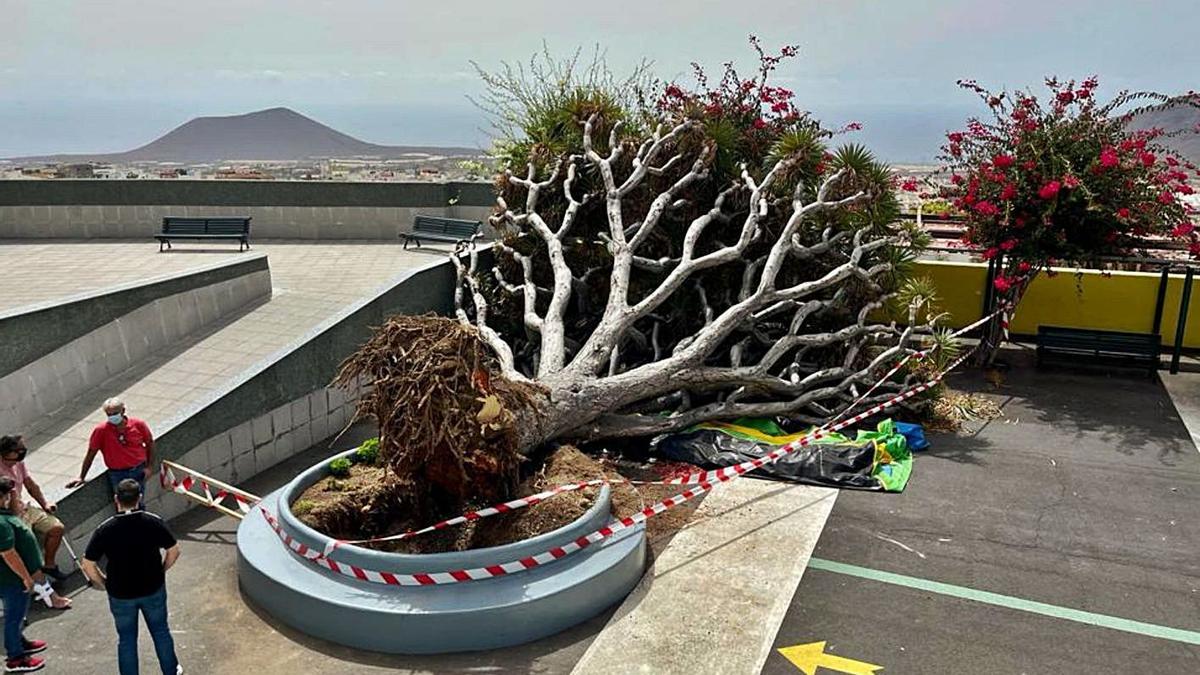
The Nazareth College’s dragon will not survive. Yesterday he Council He confirmed that “it cannot be transplanted elsewhere, due to biological problems and the damage caused by its collapse in July.” These words of the insular councilor for Natural Environment and Security Management, Isabel García, confirm the fears of the community. “We have made the Biodiversity area of the island Institution available to the Güímar City Council, although we have not been able to do anything to recover it,” confirms García, who had agreed with the mayor, Gustavo Pérez, the collaboration of the Cabildo in the transfer and transplantation of this specimen of more than 130 years.
The Dracaena draco of the Nazaret school, about 10 meters high and a crown width of 11.50 meters and more than 15 tons in weight, collapsed on July 20 as a result of several factors, among which the Cabildo cites “The presence of fungi in its carriage”. Gustavo Pérez explained that, in order to try to recover it, “in a first assessment the possibility of transplanting the tree to a nearby place was considered. However, reports indicate that this transplant will not be successful, mainly due to the poor development of its roots, ”said the mayor.
In permanent coordination with the management of the Nazaret College, the specialists consulted, among which the Cabildo mentions the president of the Center for Initiatives and Tourism (CIT) of Güímar, Luís Marrero; the architect Alberto Luengo, as well as various experts in botany, biology and replanting, have concluded that its “state of health, added to the breakage of more than half of the branches, has made it impossible for it to be transplanted.” In the aforementioned report he also clarifies that “it is not the same to transplant a dragon tree with its root ball in good physiological condition, than to replant a fallen dragon tree with serious pathologies and in a regrettable state of conservation.” The document reflects that “even the possible rooting of its arms is also very limited, since the branches lack aerial roots.”
It was during the morning of July 20 when this dragon finally gave way, while a summer camp was being developed in what is now called Colegio Santo Domingo. The educational community of this privately owned college considers that eThe specimen had been ill for six years, As minimum. It is evaluated as one of the oldest of those that exist on the Island.















